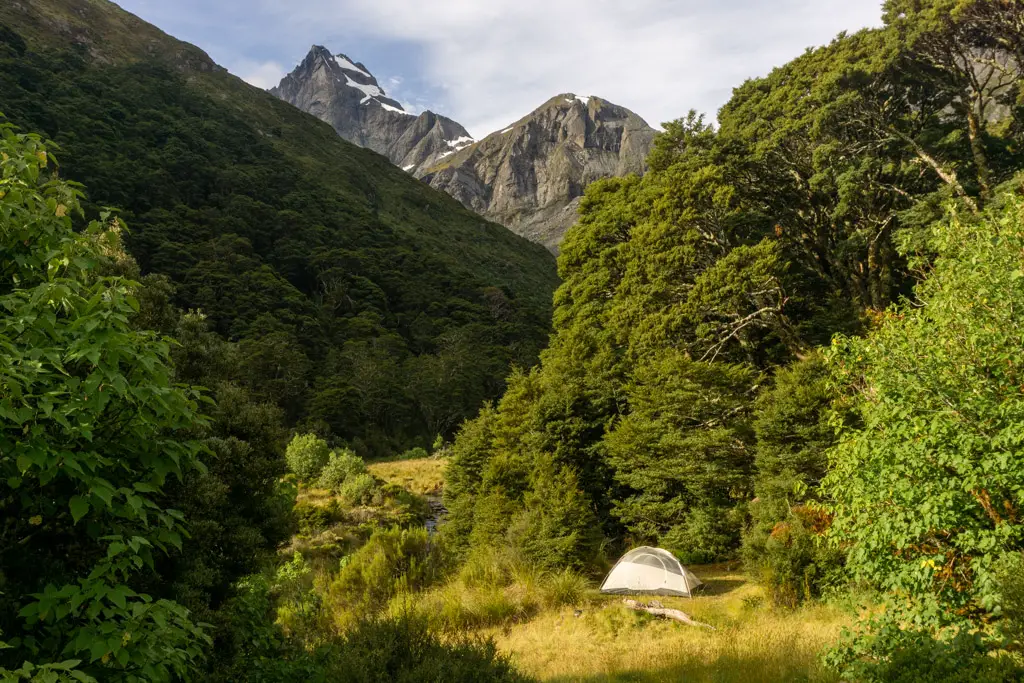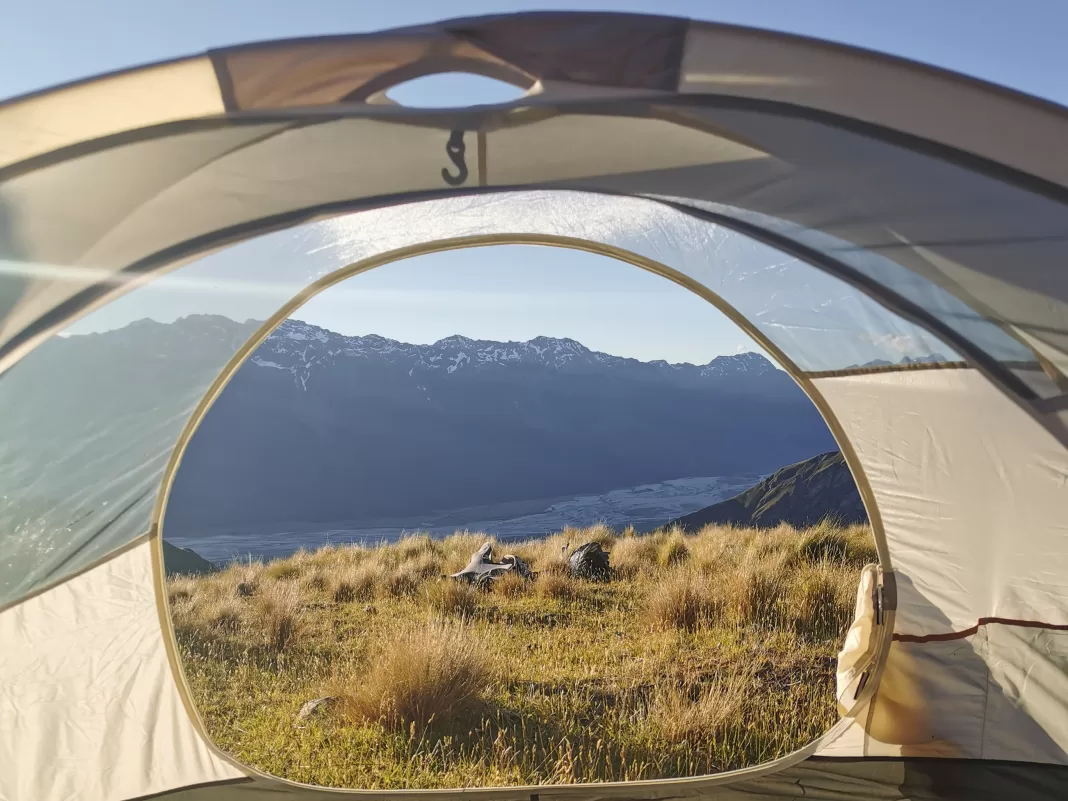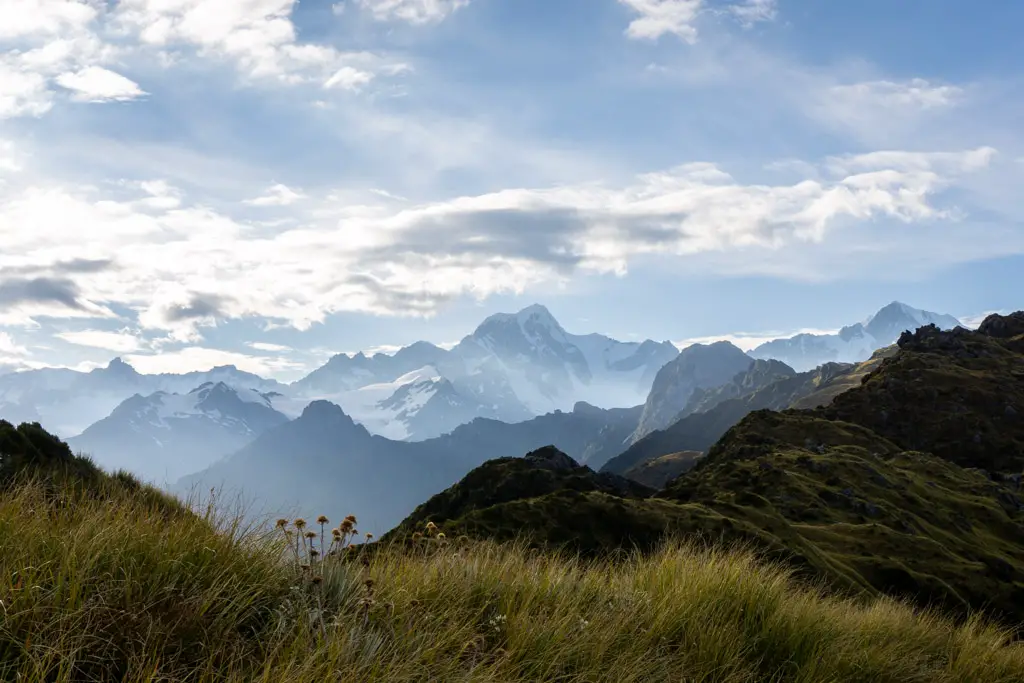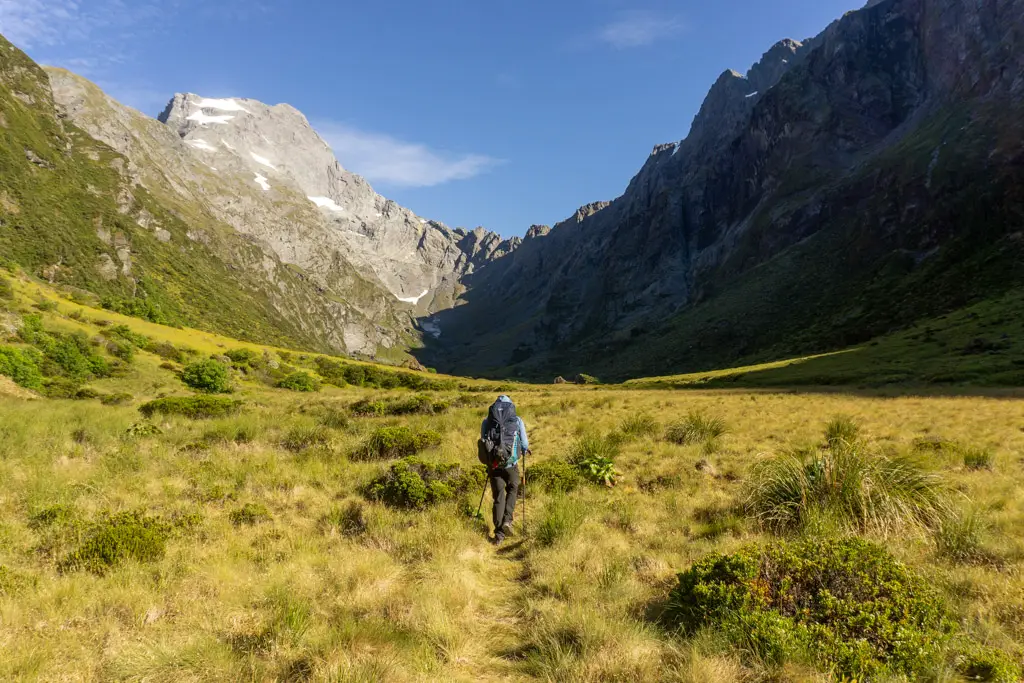Where can you wild camp in New Zealand?
I run a series over on Instagram called “Thursday Tramping Tips” where every Thursday I post a different piece of advice related to tramping (hiking). This week’s Tramping Tip about wild camping was just too big to cover adequately in a short Instagram caption, so I thought I’d actually do this topic justice and dedicate a whole blog post to it.
Resources:
- Leave No Trace website
- “Selecting a Campsite” on LNT website
- DOC Freedom Camping webpage
- DOC access map
- List of restricted camping areas (DOC)
- Outdoor Access Map (from Herenga ā Nuku Aotearoa / the Outdoor Access Commission)
- Check It’s Alright website (checking fire bans for using gas cookers and campfires)
- Dog access and rules (DOC)
Relevant legislation (not including bylaws):
So, where can you wild camp in New Zealand?
I went down a rabbit hole of legislation and research that became very confusing, very quickly. The official answer from the government is that wild camping is “generally allowed [on DOC land] except for some exceptions”, but not on DOC reserves “unless a sign allows it”.
So to summarise: you might, or might not, be allowed to camp on DOC land, and you might not, or might, be allowed to camp on DOC reserves.
Cool.

So, where you can really wild camp in New Zealand?
From what I could find you can legally wild camp so long as you’re:
- not on private land
- more than 200m away from a formed road or Great Walk (500m for the Fiordland Great Walks)
- not in a spot where “camping is prohibited”
Yeah, you read that last one correctly. You’re not allowed to camp where you’re not allowed to camp. Cool cool cool.
To break that last one down, there are specific areas where camping is restricted, often for conservation purposes (e.g. Crucible Valley to protect the alpine plants growing there). However the only way to know about these restricted areas is to read up on each specific area on the DOC website – they don’t show up as restricted on any of the DOC or Herenga ā Nuku Aotearoa website maps.
But that’s just the legal side of wild camping. In my opinion there is a lot more to it!

What about environmentally responsible outdoor recreation?
There are plenty of places where following the legal advice would still be extremely damaging to the environment. I’ve camped in a few places that I was legally allowed to, but with what I know now, I probably shouldn’t have due to the potential environmental impact.
So if you want to be a responsible tramper and help protect our backcountry for future generations, what other ‘rules’ should you consider when wild camping in New Zealand?
- respect the guidance of local iwi (avoiding tapu areas e.g. certain mountain summits, or anywhere a rahui has been placed)
- follow local fire season regulations if using gas cookers / campfires (use the Check Its Alright website for information on the specific area and timeframe you’re considering)
- follow Leave No Trace principles
Leave No Trace principles
1. Plan Ahead & Prepare
2. Travel & Camp on Durable Surfaces
3. Dispose of waste properly
4. Leave What You Find
5. Minimise the Effect of Fire
6. Respect Wildlife
7. Be Considerate of Others
The issue isn’t just you alone camping somewhere for a single night, the real issue is the many people who will invariably follow in your footsteps. People who might not be as educated as you are when it comes to responsibly wild camping.
Please ask yourself – “what if 100 people did the exact same thing I’m doing?” How would that impact the environment? Walking off track, pooping above the treeline, camping on fragile land might not seem like a big deal to you, but imagine a horde of people doing the same thing.
While this thought experiment might seem hypothetical, it’s exactly what’s happening in certain areas of Aotearoa. Please think about your actions and the effect they might have. I think we can all do better, myself included! There are many places that I now regret camping in with the knowledge I know now. We can’t change what we’ve done, but we can commit to doing better.
Thanks for reading! If you think any of this information is incorrect or have something you think I should add, please do reach out to me. I genuinely welcome constructive feedback and want to lead people in the right direction, not astray. So pop a comment down below, email me at hi.aliceadventuring@gmail.com or message me over on my Instagram.
Check out some of my favourite places I’ve wild camped:

A beautifully situated hut near Glenorchy, Otago, but very small – so taking a tent is advised!

A challenging climb, but if you make it you’ll be rewarded with a hopefully clear evening / morning to enjoy stunning glacier views and New Zealand’s highest peaks.


I know this if off topic but I’m looking into starting my own blog and was curious what all is required to get set up?
I’m assuming having a blog like yours would cost a pretty penny?
I’m not very internet smart so I’m not 100% certain. Any
tips or advice would be greatly appreciated.
Appreciate it
I’d recommend looking up ‘how to start a blog’ on youtube – you’ll find plenty of helpful videos who should point you in the correct direction. I’m also happy to answer any specific questions you have, but easiest to get a hold of me either my email or Instagram. It does cost several hundred (NZ) dollars per year to run (not counting my time). If it’s a passion it’s great, but it’s definitely not a way to earn quick money.